Post by Braveheart ♥ on Oct 1, 2017 22:16:41 GMT
Predators
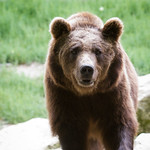
BEARS
Sub-Species // Black bear, Brown bear
Most Common // Brown bears
Average Size // About 6.5 feet tall (on hind legs), weighing about 400 pounds.
Where They Are the Most // Berry Valley
Behavior //
Dangers of // Bears are dangerous for a multitude of reasons. Though you may find a few that are willing to let bygones be bygones, they fiercely protect their young and food. If they perceive you to be a threat they are defensive creatures, so maybe staying out of the way may be the best plan of attack.
Most Common // Brown bears
Average Size // About 6.5 feet tall (on hind legs), weighing about 400 pounds.
Where They Are the Most // Berry Valley
Behavior //
Dangers of // Bears are dangerous for a multitude of reasons. Though you may find a few that are willing to let bygones be bygones, they fiercely protect their young and food. If they perceive you to be a threat they are defensive creatures, so maybe staying out of the way may be the best plan of attack.
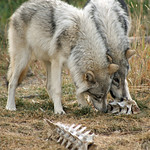
WOLVES & WOLFDOGS
Sub-Species // a complete list can be found through Google
Most Common // not available
Average Size // varies by species
Where They Are the Most // Everywhere
Behavior // Wolves, dogs, and the like are by nature pack animals. They work best in a group setting and can be a bit defensive when provoked, but are generally easy going to encounter.
Dangers of // They are powerful, intellectual creatures and can be unpredictable.
Most Common // not available
Average Size // varies by species
Where They Are the Most // Everywhere
Behavior // Wolves, dogs, and the like are by nature pack animals. They work best in a group setting and can be a bit defensive when provoked, but are generally easy going to encounter.
Dangers of // They are powerful, intellectual creatures and can be unpredictable.
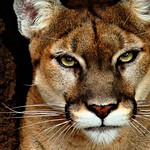
MOUNTAIN LIONS
Sub-Species // none
Most Common // none
Average Size // About 2.5 feet tall, weighing about 150 pounds.
Where They Are the Most // The Lion's Den
Behavior // Mountain Lions are generally quiet and enjoy their solitude, however hunger, defense and other reason can easily provoke them to attack.
Dangers of // Mountain Lions are not only extremely intelligent, but they are very skilled ambush hunters. Always keep an eye on your six when you're in the Lion's den, you never know who or what may come creeping up on you.
Most Common // none
Average Size // About 2.5 feet tall, weighing about 150 pounds.
Where They Are the Most // The Lion's Den
Behavior // Mountain Lions are generally quiet and enjoy their solitude, however hunger, defense and other reason can easily provoke them to attack.
Dangers of // Mountain Lions are not only extremely intelligent, but they are very skilled ambush hunters. Always keep an eye on your six when you're in the Lion's den, you never know who or what may come creeping up on you.
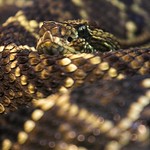
RATTLESNAKES
Sub-Species // not available
Most Common // not available
Average Size // About 6 feet long, weighing about 7 pounds.
Where They Are the Most // Rattler's Cavern
Behavior // Snakes generally like to keep to themselves, however their incredible camouflage combined with their need to be out and about under the sun means they are very likely to be stumbled upon.
Dangers of // There's really no question as to why snakes are dangerous. If they're not venomous, a bite from a snake would not only incredibly hurt, but could also become infected and turn into a larger scale issue. Needless to say, it's never a bad thing to avoid these creatures.
Most Common // not available
Average Size // About 6 feet long, weighing about 7 pounds.
Where They Are the Most // Rattler's Cavern
Behavior // Snakes generally like to keep to themselves, however their incredible camouflage combined with their need to be out and about under the sun means they are very likely to be stumbled upon.
Dangers of // There's really no question as to why snakes are dangerous. If they're not venomous, a bite from a snake would not only incredibly hurt, but could also become infected and turn into a larger scale issue. Needless to say, it's never a bad thing to avoid these creatures.
Prey
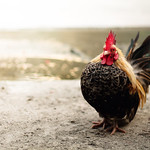
BIRDS & CHICKENS
Sub-Species // not available
Most Common // Chickens, Ducks, Crows/Ravens, and other wild birds.
Average Size // Varies
Where They Are the Most // No specific board
Behavior // Birds are all aloof to danger and, though they are not very smart, they do have quick reflexes.
Weakness of // Though any bird will be tough to catch, larger birds such as chickens and turkeys will make a tasty treat. Heavier birds will not fly as well and if a bird's wing is injured they're guaranteed an easy meal. The chickens especially are weaker birds as they've been left over from the days of the humans and are not a survival of the fittest bird.
Most Common // Chickens, Ducks, Crows/Ravens, and other wild birds.
Average Size // Varies
Where They Are the Most // No specific board
Behavior // Birds are all aloof to danger and, though they are not very smart, they do have quick reflexes.
Weakness of // Though any bird will be tough to catch, larger birds such as chickens and turkeys will make a tasty treat. Heavier birds will not fly as well and if a bird's wing is injured they're guaranteed an easy meal. The chickens especially are weaker birds as they've been left over from the days of the humans and are not a survival of the fittest bird.
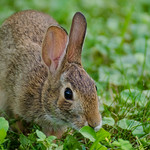
RABBITS & HARES
Sub-Species // not available
Most Common // not available
Average Size // About 5-7 pounds
Where They Are the Most // No specific board
Behavior // Rabbits are quiet and very aloof. They're often times not found to be hanging out where their weakness may be a target.
Weakness of // While rabbits are skilled prey and can sometimes get out from under their predators, often times they flee for safety too much, making them a very predictable target. They can be easily cornered in a burrow for that special hound willing to dig for it.
Most Common // not available
Average Size // About 5-7 pounds
Where They Are the Most // No specific board
Behavior // Rabbits are quiet and very aloof. They're often times not found to be hanging out where their weakness may be a target.
Weakness of // While rabbits are skilled prey and can sometimes get out from under their predators, often times they flee for safety too much, making them a very predictable target. They can be easily cornered in a burrow for that special hound willing to dig for it.
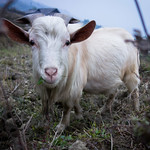
GOATS, SHEEP & CATTLE
Sub-Species // not available
Most Common // not available
Average Size // Varies
Where They Are the Most // No specific board
Behavior // These animals are herd animals, hardly straying from the herd unless they've got their own little group. They find their strength in numbers and are often times geared toward the protection of the young and the protection of the herd.
Weakness of // Many of these animals that find comfort in numbers can be easily taken down by simply getting one away from the crowd. By isolating your prey, you will greatly impact your chances of catching your prey. Be careful, however, some of the larger mothers are quite capable of inflicting damage.
Most Common // not available
Average Size // Varies
Where They Are the Most // No specific board
Behavior // These animals are herd animals, hardly straying from the herd unless they've got their own little group. They find their strength in numbers and are often times geared toward the protection of the young and the protection of the herd.
Weakness of // Many of these animals that find comfort in numbers can be easily taken down by simply getting one away from the crowd. By isolating your prey, you will greatly impact your chances of catching your prey. Be careful, however, some of the larger mothers are quite capable of inflicting damage.
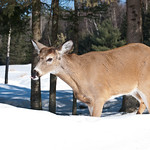
DEER, ELK & CARIBOU
Sub-Species // not available
Most Common // White tailed deer
Average Size // Varies
Where They Are the Most // No specific board
Behavior // These 'wild cattle' species are also herd animals, however they've got the years of natural experience hiding from predators. They're very smart and are often times one step ahead of their predator.
Weakness of // The biggest flaw in these well adapted animals would be the curiosity of their young and the weakness of their elders. If you're going for a little wild treat with these fellas, you won't have much luck with any of the young and powerful.
Most Common // White tailed deer
Average Size // Varies
Where They Are the Most // No specific board
Behavior // These 'wild cattle' species are also herd animals, however they've got the years of natural experience hiding from predators. They're very smart and are often times one step ahead of their predator.
Weakness of // The biggest flaw in these well adapted animals would be the curiosity of their young and the weakness of their elders. If you're going for a little wild treat with these fellas, you won't have much luck with any of the young and powerful.

FISH
Sub-Species // not available
Most Common // not available
Average Size // Never more than 5 pounds
Where They Are the Most // Any board with water!
Behavior // Fish have no fear from predators above the water, so they can often times be found pretty much anywhere, however they are very agile and tough to catch.
Weakness of // Fish can't see their predators looming above them like the way a caribou could see a wolf coming. If you're thinking of trying to catch one of these guys, your best bet would be the element of surprise.
Most Common // not available
Average Size // Never more than 5 pounds
Where They Are the Most // Any board with water!
Behavior // Fish have no fear from predators above the water, so they can often times be found pretty much anywhere, however they are very agile and tough to catch.
Weakness of // Fish can't see their predators looming above them like the way a caribou could see a wolf coming. If you're thinking of trying to catch one of these guys, your best bet would be the element of surprise.
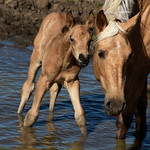
DONKEYS & MUSTANGS
Sub-Species // not available
Most Common // Wild mustangs and the remnants of the humans' work horses
Average Size // Varies
Where They Are the Most // No specific board
Behavior // While donkeys and mustangs are both unpredictable of whether they will stay with a herd or not, they are more often than not herd animals. They are spookish, large, and very powerful creatures, however they have a confidence enough to defend themselves and their young from prospective danger. They're often smart animals, though of course there may be an exception somewhere along the line.
Weakness of // Horses are strong opponents and, unless you rival them in size, the only way to catch one may be to target the young and old.
Most Common // Wild mustangs and the remnants of the humans' work horses
Average Size // Varies
Where They Are the Most // No specific board
Behavior // While donkeys and mustangs are both unpredictable of whether they will stay with a herd or not, they are more often than not herd animals. They are spookish, large, and very powerful creatures, however they have a confidence enough to defend themselves and their young from prospective danger. They're often smart animals, though of course there may be an exception somewhere along the line.
Weakness of // Horses are strong opponents and, unless you rival them in size, the only way to catch one may be to target the young and old.



















